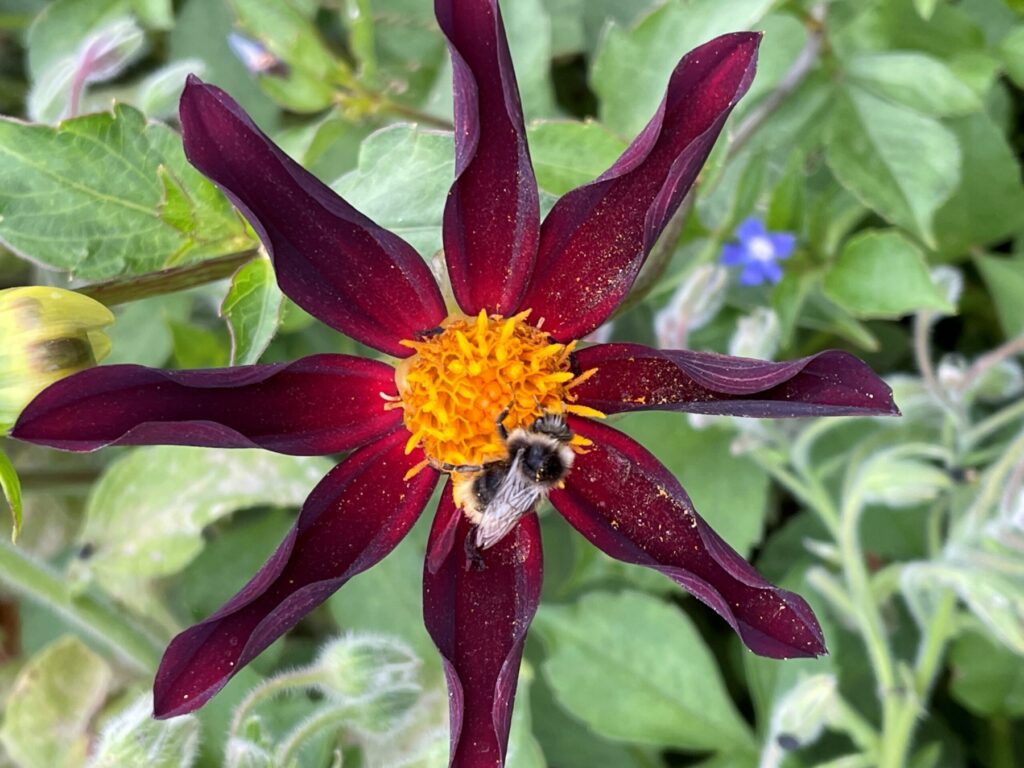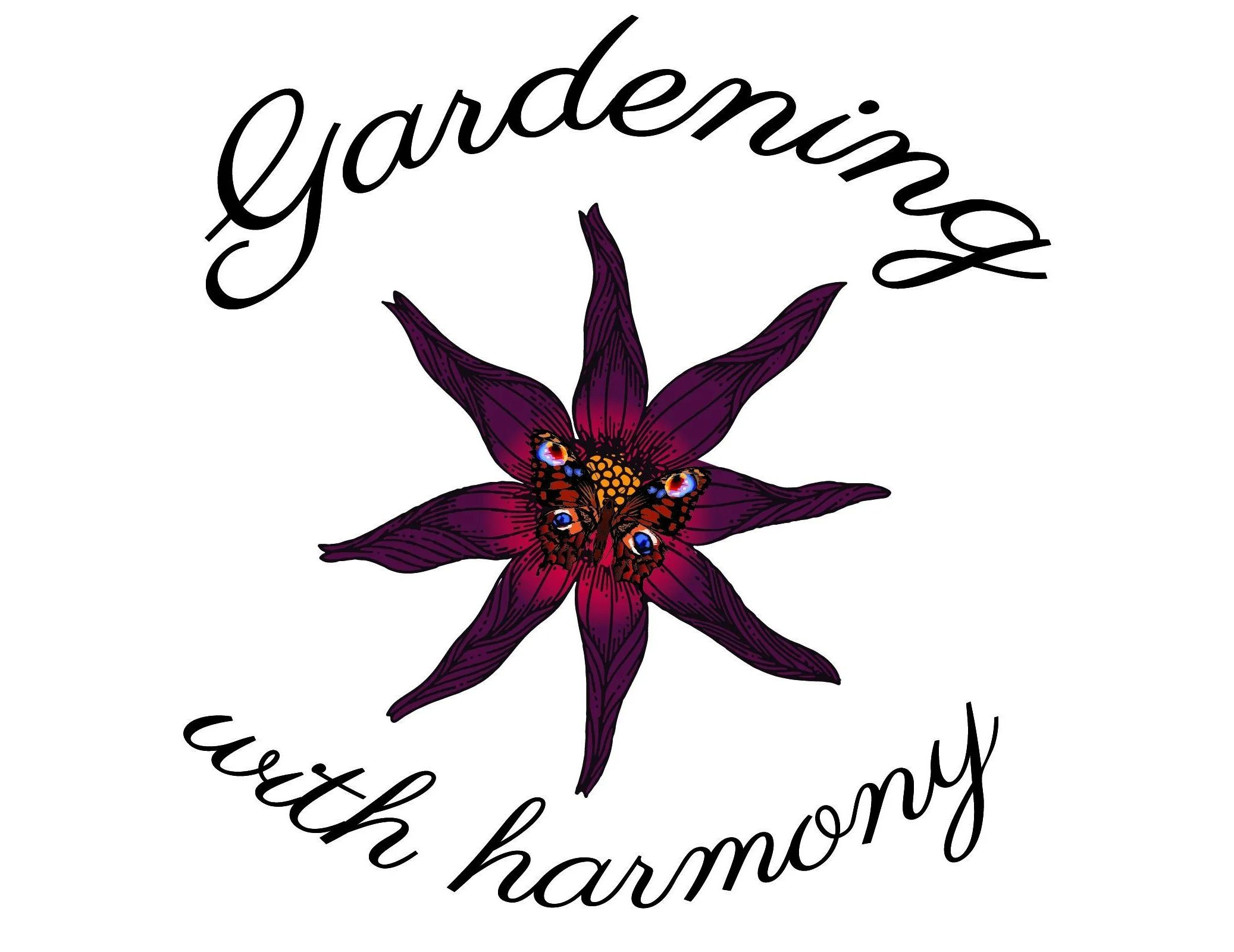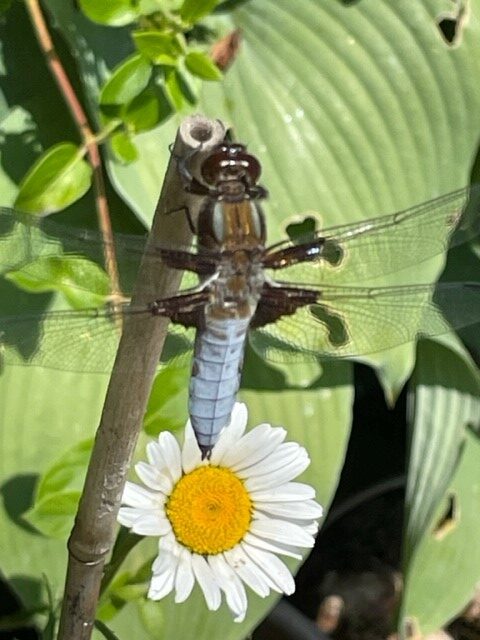
Another quick recap
My recent post Wild things for gardeners, bee beautiful set a challenge called 30 Days Wild.
30 Days Wild is The Wildlife Trusts’ annual challenge where they ask everyone to do one wild thing a day throughout the month of June.
More details can be found here https://www.wildlifetrusts.org/30dayswild
I was sure we could do that!
As a passionate gardener who gardens for wildlife, and all-important pollinators, I was raring to get involved.
In addition, I thought it would be fun to be wild every day for a month.
Click here for details of my wild Week one 30 Days Wild. First week challenge and read on for week number two.
My Wild Week Two

8th June and a visit to my family. The first flower I saw in their garden was the beautiful Patty’s Plum Oriental poppy. Eighteen flower heads and covered in bees.
Later, some of their friends appeared. Naturally, they went straight over to the Patty’s Plum to swoon.
I joined in with the swooning and promised myself I would purchase my own.
Patty’s Plum Poppy is a stunning Oriental poppy in the most beautiful colours, quite an unusual mix of colours in each flower.
I snapped some photos of many other beautiful flowers in the garden. Clearly, once I had dragged myself away from Patty’s Plum!
Another garden chock full of flowers for the pollinators. Also, sporting a plethora of bird feeders, visited by hundreds of birds.
I spotted robins, blackbirds, sparrows, starlings, and blue tits. Additionally there were goldfinches, great tits, dunnocks, jackdaws, and wrens.
Occasionally a great spotted woodpecker, some greenfinches, and a sparrow hawk visit as well.
Over thirty nest boxes are sited in the garden so another boon to the birds.
In addition, there is a small pond and a resident toad around this area.
Ultimately, a garden designed to be as beneficial for all types of wildlife as possible, and a joy to spend time in.
Wild day nine of 30 Days Wild

9th June became a follow the bumble bee day. I noticed this whopper of a bee on a patch of white sweet william flowers. Because my sun lounger was positioned next to this border, I was able to lounge for a while and watch.
As this border mainly has the white Alba variety, the bee visited all of the white ones. Next was a visit to all the light pink ones. These were a seed mix of single colours I bought last year from https://higgledygarden.com/product/sweet-william-higgledy-mix/ and grew in my greenhouse, Favolosa.
After visiting all of the light pink ones, it was the turn of the dark pink flowers, part of the same Higgledy mix.
Next came the Electron mix which came from Amazon last year https://amzn.to/43NoCjQ These ones are a jazzy mix of patterned flowers.
Finally, it was the turn of my favourite sweet william, the beautiful dark Nigricans. Initially planted in one border but last year I added more plants I had grown from seed to other borders.
It was interesting to see the bumble bee visiting each border in turn. I followed and took some photos.
You can sow sweet william from late May until the end of July for flowering the following spring. I thoroughly recommend this flower, both for its beauty and its attraction for pollinators.
10th day of wildness

10th June, a scorching hot day. I chose to watch my wildlife ponds today to see what I could spot.
Having four wildlife ponds in my garden, It was a real treat to spend time laying on the grass and peering into each pond. To begin with, I just flopped down, but after a while I thought it best to tie my hair up, so it was not trying to float in the pond!
As a result of all my observing, I was lucky enough to see four dragonflies flitting around one of my ponds. A quick check of my books and I confirmed they were all Broad Bodied Chaser dragonflies.
Subsequently, I recorded my sightings for the British Dragonfly Society, link here if you spot some. https://british-dragonflies.org.uk/recording/submit-your-records/
I learnt that female dragonflies could lay hundreds of eggs during their adult lives, in batches over a few days or even weeks.
Additionally, I learnt that Hawker dragonflies have scythe-like ovipositors which is a tubular organ through which the female deposits eggs. Also, they inject their eggs into plant stems or leaves, rotten wood, or mud close to the surface of the water.
Usually, they choose my clumps of flag iris, and it looks like they are circling the area again for egg laying this year.
Wild day 11 of 30 Days Wild

June 11th, another jolly hot day for 30 Days Wild. I chose an insect identification day today in my garden. Because I have hundreds of Ox-eye Daisy flowers in my garden this year, I thought it would be interesting to see how many different insects visited these flowers.
Additionally, the open flower heads of the Ox-eye Daisy attract an enormous range of pollinating insects particularly bees, butterflies and hoverflies, so this was an ideal choice for me.
First to be seen were the hoverflies. About half of British hoverflies are munchers of aphids as larvae and are as important as the lovely ladybirds in reducing populations of aphids. So, they are very welcome in my garden.
Next up was a medium-sized, very colourful beetle. A bright, metallic green beetle that also looked a coppery colour in the sunshine.
After checking my books, I found this was called a Swollen-thighed beetle or thick-legged flower beetle.
I learned that they feed on pollen and visit a range of open-faced flowers, making them excellent pollinators and were keen on Ox-eye Daisies.
Additionally, I spotted several more smaller beetles and flies plus some bees. Clearly, the Ox-eye Daisy was a fabulous flower to choose for my observations.
Twelfth day of wildness

12th June and a look at all the wildflowers I have in my garden.
I started at the top of the garden as this is the area set out for primarily for wildlife, wildflowers, and long grass.
Besides the large wildlife pond, this area is home to Stumpy End. An area of buried trunks and rotting wood, designed primarily for stag beetles.
Whenever the mower comes out to cut a small amount of the lawn, this area is always left to grow wild. In essence, it does whatever it wants to do.
Since Spring of this year, the area has been chock full of comfrey and cow parsley. As this has now finished flowering and the pollinators have had their fill, these plants have been pulled out.
Next to flower is the Ox-Eye Daisy, the white and pink campions, and other smaller wildflowers. I can see plenty of these in the wild area at the moment.
Common knapweed, foxgloves and yellow rattle are peeping through as well now.
Because yellow rattle is semi-parasitic, feeding off the nutrients of vigorous grasses and keeping them in check, this allows more delicate wildflowers to grow. Clearly one good reason to grow this flower, another reason is for it’s beauty.
Heading to the flower borders
Next I checked some of my flower borders. Ox-Eye Daisy and campion were jostling for space in almost every border. However, some of this will need to come out soon to give the dahlias, cosmos, scabious and other flowers some room to grow.
Additionally, I have the daisies, buttercups, dandelions, and clover in the lawns left for No Mow May, which is continuing into No Mow June and beyond in my garden! Also, some pretty blue Speedwell spreading across a gravelled area.
Overall, a very colourful sight around my garden and the wildflowers constantly visited by the pollinators.
Wild Day 13 of 30 Days Wild

13th June and another pond day for 30 Days Wild. Whilst I was watching the wildlife in my wildlife ponds on day ten, I noticed that some of the pond weed was becoming too crowded.
Also known as oxygenators because they take up nutrients and release oxygen, they are useful for a pond, providing a habitat for wildlife However, this does spread rapidly and needs to be thinned out regularly.
So, today is the pond weed thinning out day in wildlife pond number two.
I had fun twirling the pond weed out with a stick. Next step was to leave the weed on the side of the pond overnight, so larger creatures could return to the water.
I checked through the weed a few times to help the newts to re-entre the water and gently plopped the pond snails back in as well.
I identified the water snails as all being either Great Pond snails or Ramshorn snails. My favourites are the Ramshorn snails which feed on dead plants and algae, helping to keep the water clear and my ponds ecosystem working in harmony. Another gardening with harmony example then!
Another great idea is to rinse the weed in a large bucket of pond water to scoop out the smaller creatures, which can then be returned to the pond.
During the rinsing process I scooped out hundreds of pond skaters, water boatmen, water beetles and worms.
Altogether, a fascinating insight to the wildlife that lives in my wildlife ponds.
Some more useful information can be found here on wildlife and ponds. https://www.rspb.org.uk/birds-and-wildlife/advice/gardening-for-wildlife/water-for-wildlife/wildlife-in-ponds/
14th day of wildness

14th June and the last day of week two of wildness for 30 Days Wild. A day to smell the garden!
My Dracunculus Vulgaris, often called the Dragon Arum or Dragon Lily, is now in flower. However, I will not be smelling this one too closely!
Always a spectacular looking flower with a mixture of purple and red, but the flower gives off an absolutely rotten smell.
As a result of the smell, I have these at the very top of the garden in the corner of the wildflower and Stumpy End area.
Native to the Balkans and parts of Turkey so clearly not a native for the UK but it has arrived in my garden!
The truly revolting smell of the flower attracts flies and beetles for pollination though.
Once pollinated, the flower begins to wither rapidly. Next up, berries are formed that mature to a red-orange colour that attracts birds.
Cleary, not all bad then if it is useful for some wildlife.
I did not stay in close proximity to this flower for long, just long enough to take a photo or two.
On to some fragrant scents
To give myself a treat, I then checked on all my Gertrude Jekyll roses, always one of the first English Roses to start flowering in my garden.
The beautiful, perfectly balanced Old Rose scent is often described as being the quintessential Old Rose fragrance. So, a much better choice for a sniff!
In addition to the lovely scent, this rose is a fabulous pink colour and fairly vigorous, so a lovely addition to the garden.
Later, towards dusk, a long sniff of my beautiful hesperis. Called Sweet Rocket for a particularly good reason. Such a lovely smell.
So, that concludes the excitement of wildness week two of 30 Days Wild.
Click here for wild week three The fantastic wildness of magic week 3
To see all my updates as they happen, please enter your email address below and press the subscribe button.



2 responses to “30 Days Wild, week two of the challenge”
I really enjoyed that blog. Was very informative. Thank you. Plus the dragonfly pic is awesome.
So pleased you liked this one and the dragonfly too. Thanks for the comments.